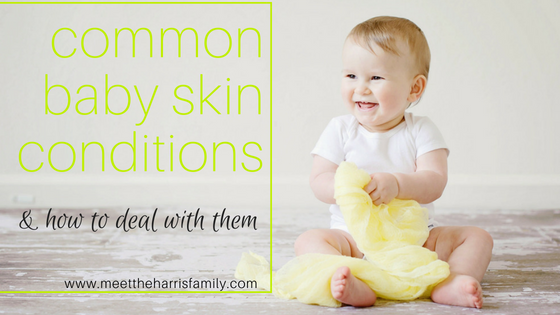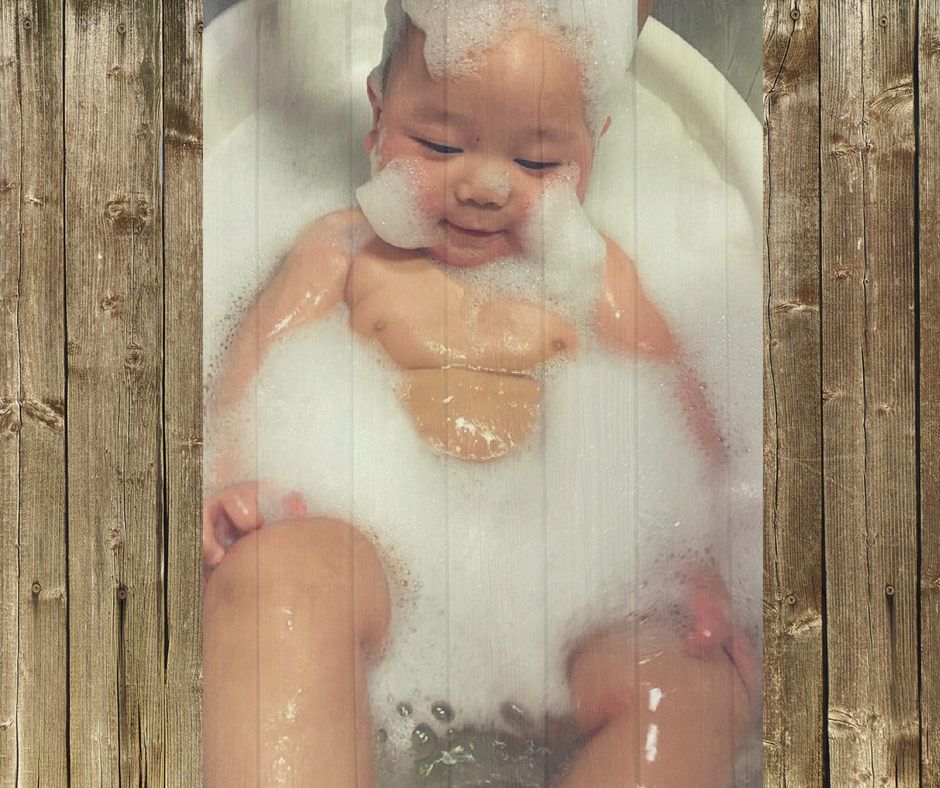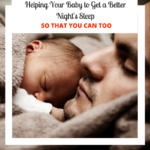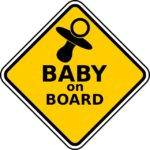We are all well aware that a baby’s skin is a whole lot more sensitive than the average adult’s. But not many of us understand why. You may be surprised to know that a baby’s skin is actually around thirty percent thinner than that of an adult’. Which means that their skin is unable to put up the same effective protective barrier. It loses moisture around two times faster than an adult’s too…like seriously, it does. And that alone can result in dryness and irritation.

This is a contributed post and do not necessarily reflect the opinions of Meet The Harris Family.
The thinness of the skin also means that little ones are more susceptible to temperature change. This is why many of us test the temperature of a baby’s bath water by dipping our wrist or elbow in . These are the areas of thinner skin on our own bodies, which allows us to gauge how the baby might feel if placed in the water.
When taking all of this into account, it’s not all too surprising, then, that many babies tend to develop some sort of skin condition at some point in their first few years of life. It’s important that you’re familiar with the symptoms of these so that you can determine your child’s condition. However, this should always be done professionally by a doctor and they can help you find the best way to treat it! So, let’s take a look at just a few common skin conditions that your little one might face at some point down the line!
Diaper Rash
Perhaps the most common skin condition amongst babies, and consequently one that most of our little ones will experience at some point or another, is diaper rash. This condition affects the skin that comes into contact with a baby’s diaper. And contrary to what many believe, it often occurs regardless of the type of diaper a child is wearing. It is generally a result of the diaper rubbing or chafing the skin. While this is unavoidable in some cases, it’s a good idea to change your baby as soon as you realize that they have soiled their diaper.
The chafed skin being in contact with urine or feces can provoke further irritation. The skin will appear red or irritated, and your baby may be particularly sensitive in the affected area. Generally speaking, the condition will clear up on its own and doesn’t require special treatment. When washing the area, use a gentle perfume-free soap and make sure that the skin is completely dry before putting a fresh diaper on. If possible, also give your baby’s skin time to air, leaving their diaper off for a little while.
Baby Acne
Acne tends to be a condition that we associate with young teenagers who are going through puberty. However, babies can get this form of acne too. It will look much the same as the acne which affects any other age group; small red bumps or pimples can develop. And, they may be accompanied by whiteheads or white pustules. The most commonly affected areas for babies, however, are their cheeks and back. While this is an extremely common condition, causes have not been identified. Without a known etiology, nobody is entirely sure what causes baby acne, so it’s relatively difficult to actively prevent your baby from developing baby acne. However, it is generally recommended that you keep rough fabric away from your baby’s face since this can provoke the condition.
While baby acne will generally disappear of its own accord without treatment, some babies’ acne lingers around for longer periods of time. These stubborn cases can be treated with specialist ointments and medicated creams which can be prescribed by your doctor. It is absolutely essential that you do not use standard over-the-counter acne treatments on your baby. You should only be using unscented, gentle soaps on their skin. These over-the-counter treatments are formulated for adult skin and could be too harsh for your little one.
Milia
Milia can look relatively similar to baby acne. However, the two conditions are not to be confused or mixed up, as they are different. Consult a doctor if you are unsure what condition your baby is suffering from. Milia affects forty to fifty percent of newborns and is an entirely harmless condition. Generally, it affects the nose, cheeks, and chin and will first start to show a day or two after the child’s birth. You needn’t worry if your baby is affected by milia. The spots may look concerning, but they are not causing your baby any pain, and they are not contagious. It is literally just dead skin that has become trapped in pockets close to the surface of the skin. Generally speaking, they will go away of their own accord within two or three weeks.
Atopic Eczema
Chances are that you’re already familiar with eczema. It’s a common skin condition that affects a large portion of the population. In fact, it’s said to affect around one in every five children. And its symptoms will usually establish themselves before your child reaches two years of age. The most commonly affected areas of the body include the hands, the backs of the knees, the neck, and the elbows.
The condition is relatively unpleasant in that it makes the sufferer feel uncomfortable. The skin becomes dry and flakey and can sometimes itch. However, there are treatments available out there. The type of treatment that is offered will depend on the severity of the individual child’s condition. However, generally, you will be offered an emollient lotion, emollient cream, or an emollient lotion. As every child’s skin is different, you may have to try a process of trial and error until you find the best cream to suit your child’s skin.
Cradle Cap
Cradle cap occurs on a baby’s scalp and it’s pretty difficult to miss if your baby is suffering from it. Typically the baby will develop greasy, scaly patches.. While it may look serious, it really isn’t much of a problem. It doesn’t usually itch and it’s unlikely to cause your little one discomfort. It will usually develop within the first two months of your baby’s life and like many of the aforementioned conditions, will clear up alone.
While it may be tempting to try to pick the scales off, it’s essential that you don’t. This could expose your child to infection. When the flakes do pull away from your baby’s head naturally, they might take their hair with it. But don’t worry, it will grow back. Make sure to still gently wash your baby’s hair and head as you usually would. Not only is this a necessary part of your baby’s hygiene routine, but it will help to loosen the flakes. You could also consult your doctor and see whether they’d recommend using a greasier, emollient shampoo style product to help the condition heal up further.

Baby Skin So Healthy
Now, these are just a few of the many skin conditions that little ones can develop. Luckily, they tend to clear up by themselves without too much intervention being required. However, bear in mind that this is just a rough guide. While symptoms may seem relatively readable and predictable it’s always better to be safe than sorry. Consult your doctor if you do have any worries about your child’s health and wellbeing. They will be able to properly diagnose any given skin condition and offer you advice and treatments that are specifically tailored to your baby. You can also request further advice from your pharmacist if you have questions regarding how to apply or administer any treatments that you have been prescribed. Your baby’s skin should be baby soft and smooth in next to no time.


Both of my kids had cradle cap, I used to hate it and had to avoid the urge to pick it off.
I know what you mean. I used to use oil or Vaseline during bath time. It made it really soft and it would basically wash off.
Babys and skin conditions can be tricky. These are some great tips to help parents figure out what it is and what to do about it. Thanks!
Thanks for checking this article out!